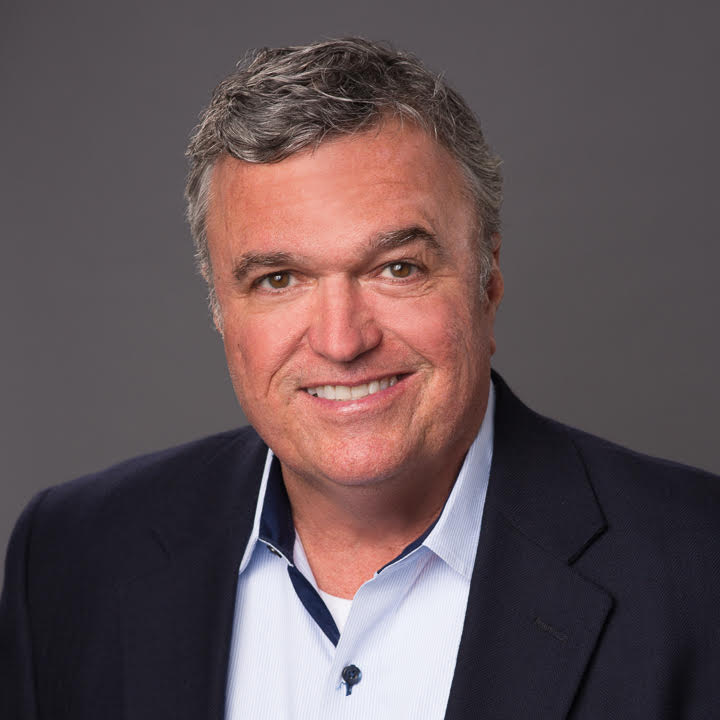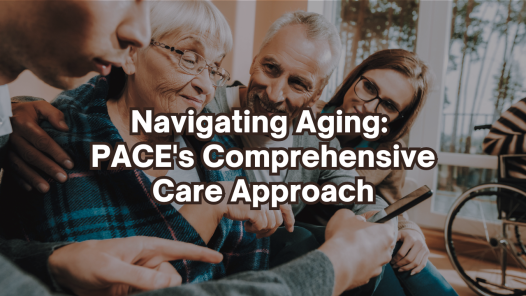
Senior housing properties are in high demand as the number of Baby Boomers entering retirement is growing daily. As the largest demographic of Americans, these Baby Boomers will be in need of care and housing supply in the decades to come. The number of Americans 65 and older will hit 79.2 million by 2035 as the Baby Boomer generation ages.
This massive demographic continues to drive great demand for senior real estate properties.
Hanh Brown: [00:00:00] Today, my guest is Boone Nerren. Boone is a real estate developer in has constructed develop and completed by full cycles of senior housing communities. He help investors find opportunities outside of the stock market that provides double digit returns with minimized risk.
[00:01:10] He’s the president of a and Z equity partners as an independent investment company, a and Z is free of being bound to a limited set of offerings provided by any one company. This allows boon to identify and offer the best available projects in multiple investment strategy. Hey, good morning, boon. Good to have you here.[00:01:32] So how are you doing thank you so much for your time and thanks for sharing with us, your story.
Boone Nerren: [00:01:41] I’m happy to do it. So, uh, thank you for the invitation.
Hanh Brown: [00:01:45] So the last time we spoke, you and your wife were getting ready to visit your college kids. Between Oklahoma state and university of Texas. Is that right?
[00:01:55] Yeah. How was your trip?Boone Nerren: [00:01:57] We split the trip into two parts because, uh, we have my wife and son go up. Her other son needed to stay home and work. And then this weekend I am connecting with my daughter for the father’s half of the trip, which will be an Austin. Uh, because her school, Oklahoma state plays, uh, the university of Texas this weekend.
[00:02:21] She wanted to go to Austin. So, uh, this weekend is my weekend. So two weekends ago was my wife’s weekend with her.Hanh Brown: [00:02:29] Yep. It’s that time of the year that we move our kids back to college, enjoy some college football games. Um, so how is the family doing?
Boone Nerren: [00:02:37] Our son is taking kind of a gap semester. He wants to switch to the university of Arkansas and, uh, He’s taken a couple of classes at the community college and working to build his own funds back up.
[00:02:51] Cause he likes while he likes to have, um, you know, and we’re happy to provide room and board. We don’t pay for concert tickets and road trips and. And other, uh, more frivolous items. And so he’s saving up for his own money and he’s way ahead on his hours. So he’s in good shape to, to make that switch. So he’s staying with us at least this semester.Hanh Brown: [00:03:16] Yeah. It’s always nice to have them near because you know, soon enough, uh, when they graduate, their jobs might take them to another state.
Boone Nerren: [00:03:24] Now we’re happy to have him because we know we’re not going to have our daughter around much more at all. She’ll, she’s graduating with a, a, a special needs therapy degree and she will be off working and living somewhere other than home, uh, fairly quickly.
[00:03:41] So, uh, her degrees in a high demand field. And so we think she’ll probably be relocating here fairly quickly, but, uh, Uh, so we cherish the time we have when we get them. And if we’ve been her son for an extra semester looks great.Hanh Brown: [00:03:58] So, please share with us your journey and how you got started in the development of the senior housing.
Boone Nerren: [00:04:05] Yes. Um, I have been, uh, investing in real estate for about 10 or 12 years. At the time, um, an ambassador at the, uh, North Dallas chamber of commerce, uh, approached me and said he had a gentleman who owned some land. It was part of the legacy family, uh, for a master plan development out in Northeast, Texas.
[00:04:28] And they had some land remaining and they wanted to find a development group. Uh, to build the senior living community there. And they felt that that was kind of the missing piece, uh, to their overall master community. And so we began a conversation and, um, I had not previously done anything in senior living. [00:04:50] Uh, so I began to just kind of search through my contacts and, and get referrals from a couple of developers that I knew. And put together an initial team to have a consultation and it led to what proved to be a feasible project. And so from seven years ago to today, we’re bringing projects three, four, and five along.Hanh Brown: [00:05:16] Wow. Congratulations, networking, building a team of strong individuals. To take a project from conception to its full fruition while that is a huge undertake. And what a blessing.
Boone Nerren: [00:05:29] Yes. I’m a land broker, a commercial broker. I know, knew of this interest. Uh, several years ago that was developing in senior living and said he’d found the site.
[00:05:44] It was actually tagged as. Uh, potential for senior living, the, uh, owner, uh, had a group that, that initially looked at it to did some preliminary, um, pre-development effort on it. Site planning and market study and showed that there was feasibility for a senior living community, but this was 2014 and the recession was still, we were still coming out of it in the commercial world and they couldn’t pull it together at that time. [00:06:12] So it’s up there. Uh, and, uh, then I was introduced to it and went down, take a look at it. And from there it just progressed to purchasing the land and everything continued to proof up in terms of its feasibility market demand, pricing, construction costs. And so we began the project in 2017. Uh, we completed it and. [00:06:38] 2019. And, um, we we’re now in lease-up mode. Um, project was opened in may and now here in September, we’re about 35% lease stuff with, uh, the expectation that, um, early 20, 20 we’ll be cashflow positive and begin making districts.Hanh Brown: [00:07:02] Do you have an institutional operator to run the facility? Um, and do they do everything from marketing to Lisa?
Boone Nerren: [00:07:10] There’s a Navy for a room, uh, facility with the assisted living and memory care is that you have a recognized, uh, institutional operator run the facility and that’s everything from marketing and lease up, uh, through resident services. Um, From top to bottom that I do all of the, uh, service and effort on the operations.
[00:07:37] And so that company, he has a very robust marketing efforts in plan and strategy that they implement, uh, to, um, uh, get that lease up done as soon as possible.Hanh Brown: [00:07:52] What’s your role in the development and to what capacity do you participate? Day-to-day you know, for the entire project.
Boone Nerren: [00:07:59] Well, I’m the, uh, development and sponsor side.
[00:08:04] Um, oftentimes things are very fee heavy and fee-based, and sponsors are out trying to put together a deal and have a promote fee and other things that are there. And, and every development project I’m aware of, uh, or at least 98% of them have that structure to them. But I’m in firsthand with the Capitol. [00:08:27] Uh, so the first check that’s written is typically out of my bank account. And then, uh, I continue to, uh, capitalize the seed money to, uh, see if the project is feasible. So, uh, the first money in it, my own money, uh, and then secondly, I’ll serve as the guarantor. Uh, so that, uh, ties me to the project, uh, from beginning all the way through the end. [00:08:54] Which on our project that opened in may, I’m in asset management mode because I’ve still got a sizable guarantor liability, um, that is assigned to me that doesn’t go away until we sell it profitably. So I am obviously very highly motivated from start to finish, to complete the project as successfully as possible. [00:09:17] And not all developers are sponsors. Uh, have that level of commitment and participation in a project.Hanh Brown: [00:09:25] I see. So you locate, negotiate the purchase of the land, uh, perform the initial legal and tax implications or, uh, due diligence. You obtain, uh, debt financing and equity. Uh, you manage the affairs of the partnership arranged for management of the operation of the construction.
[00:09:47] Um, communicate with investors make day to day operating decisions and negotiate the, um, the final disposition of the property.Boone Nerren: [00:09:58] Now it might not end up being a significant amount of the capital when you combine everything that’s done because, uh, this project we opened in may. Uh, the villages of wind crest and Fredericksburg, Texas, uh, was a 21 and a half million dollar project.
[00:10:16] And we did get a 70, 30 debt and equity, but that’s still, that was still about 6.3 million in equity. Well, my portion of the equity was about the 0.3 and then institutionally, once we got it put together, uh, we had a senior equity company. Uh, that brought in the lion’s share of the equity. So I don’t want to miss represent that I’m basically funding that all myself, but all the initial seed capital, um, is, uh, something I put in and bring together. [00:10:51] And then, uh, at the appropriate time, um, we’ll begin the conversations with senior equity. Sources and bring them in to participate in the project.Hanh Brown: [00:11:02] So what makes your team so successful?
Boone Nerren: [00:11:05] It’s a group of proven industry leaders. So the one thing I knew when I got started in senior living is that I knew nothing and I needed to surround myself with people who did and experts.
[00:11:15] And so I sought out not just the cheapest or friends of friends referrals, but those who were recognized in the industry as industry leaders, Um, we, uh, have selected the two, um, the letter B the number two, uh, architects as our design, uh, architect firm they’re based in Dallas have about, uh, 30, uh, architects on their staff and focus almost exclusively on senior living. [00:11:51] So they’ve developed a good reputation and have an excellent track record. And so we added them to the team. And, uh, from there, our GC, uh, is on a bid process, um, each time. And so we don’t just award the contract before there’s even bidding on the GC. So each project then goes through a GC bidding, uh, uh, structure. [00:12:16] And, uh, oftentimes because of the nature and the geography, the GC changes, uh, when. New building and central Texas, or you’re building that in Northeast, Texas. Um, you’re often get a different sub base and a different GC that can bring better efficiencies to it. But we still have our GCs go through a, a strong vetting process. [00:12:41] Um, there is a requirement package that we send out to each of them and, uh, they must be bonded. They must be able to bond the project. Um, to ensure its completion. Um, and they have to have certain track record and other metrics staff being the back office support, uh, as well in order to qualify. Um, and then from there we would pick the one who can bring together. [00:13:09] The project shows the greatest vision and, uh, probability of delivering the project on time and on budget. So the GC often changes. Um, and then, uh, several is almost always local, right? Because you’re using civils who know the terrain and who know the local city structure and know, uh, the ins and outs of local, uh, civil construction. [00:13:35] So, um, we often also have a different civil, uh, at each site, although we have used, um, we have had repeat civils. Engineers, uh, on projects. But, uh, that’s another thing that we often, uh, ended up using someone local. Um, and then, uh, the last piece of course is spa absurd and guarantors, and that’s what I bring to the table. [00:14:03] And of course that’s consistent in each of them. So I will always, uh, serve as a sponsor and a guarantor to provide that, uh, commitment to the project, as well as provide that skin in the game that. Um, you know, allows me to bring some value that, um, hopefully gives investors confidence that, uh, I’ve got a lot to protect in the project and to make sure it comes together as successfully as possible from the early structuring and these early design phases, uh, all the way through construction, when the GC and the architect roll off. [00:14:39] Uh, I’m still in the project and asset management mode as we’ve worked with the operations company, uh, to lease it up and then ultimately to sell it. So, uh, that keeps me in is really the one party that’s involved from the very beginning, all the way through the end. And I’ve got contingent liability right up until we sell and make distributions.Hanh Brown: [00:15:02] Is your construction team, um, in the deal as a GP, or are they a fee base?
Boone Nerren: [00:15:08] They’re fee-based contractors? The architect is a fee-based contractor. The operator is a fee-based operator. Uh, so each of these are fee-based components, um, that do not have ownership. So the ownership is all split up amongst, uh, the sponsor.
[00:15:25] And then, uh, the. Any other early equity partner, we didn’t have a handful of, um, investors who have, um, participated with me or invested with me for over 10 years that liked to participate early on and have a carried interest in the project as well. But the primary bulk of the ownership is senior equity. [00:15:52] And when we drop in that part and have that commitment and we don’t bring our senior equity in until we close in the construction. So all the rest of the chase and seed capital that’s necessary comes from the sponsor. And, and when we have it identified and shaped up and we have our permits and our construction drawings completed and we’re ready to break ground. [00:16:13] That’s when we’ll bring in our senior equity piece. And so they have a shorter time in the project and they have greater surety of their money being protected because at this point it’s ready to go. The GC is bonded. The likelihood of the completion of the project is very strong. And so that helps bring more security to the senior equity capital that comes in.Hanh Brown: [00:16:38] Okay. So let’s touch on financing. The type of financing is contingent on the level of experience of the team, the operator, the construction crew, and so forth. So how did you, um, Uh, look for a bank that you work with a local one. And how did you come to them?
Boone Nerren: [00:16:53] I always include local banks in the process because they can be, uh, a very, um, uh, attractive source of financing.
[00:17:05] And they have a lot of local interest in the community. And so they become tied to the project in a way that’s that we find is helpful. Uh, and of course the interest rates and all tend to be the lowest when you’re using it. A local bank. Uh, the, the lowest are agency loans. So if you can get a HUD or USDA, or if it qualifies even now for the opportunity zone, um, structuring there’s agency and debt financing, there that’s even more attractive. [00:17:35] Now, some of those have like an opportunity zone. You don’t maximize. You’re a full benefit until you’ve held the project for 10 years. And of course at that point, uh, if you do that, you don’t have, uh, capital gains when you sell it. So that’s become a much more attractive way. And we are looking at. Um, using opportunity zones as we move forward. [00:18:01] And this is just something that’s come together in the last, over the years, we also look at USDA and our smaller markets because a USBA well finance up to 10 million on construction, on a project, in a rural, full or tertiary, second theory market. Um, and so that’s another attractive source of financing. [00:18:24] So it’s a combination of, um, Contacting all possible sources when a project’s identified and then seeing what comes to the top as the best, best option to utilize.Hanh Brown: [00:18:38] So local banks may move a bit faster. And did you build in, let’s say six to eight month process, um, process, um, to account for financing, uh, into your underwriting.
Boone Nerren: [00:18:52] So on the local bank, um, it’s that I need to 120 day process, um, on a, um, agency alone it’s six months to eight month process. Um, so yeah, those timings have to be considered into it. Um, that does, I guess, add one more benefit to the local bank is that they can move a little faster. Uh, but you’ve got a six to eight month process already built into it.
[00:19:22] From the time you’re designing to selecting your full development team, to select a new GC, to doing valet value engineering and further refining your costs. Uh, getting all of your construction drawings done, which is a two to three month process. Uh, you’ve already got a time built into it. So if you start your financing discussions early, uh, that typically falls into something that doesn’t delay the start of your project. [00:19:52] So it’s a planning and coordination effort, uh, from the beginning that you begin shaping up your financing.Hanh Brown: [00:19:58] So what is the availability of capital for such projects and purchases of what you’re doing?
Boone Nerren: [00:20:02] I haven’t found any lack of, of, uh, active financing options yet, uh, in this particular boom cycle. Now, as you know, from the recession, uh, financing becomes tight and constricted, um, and harder to find, uh, um, in times when we are in a robust.
[00:20:25] Uh, development and financing market. There is a lot of capital, uh, including the agencies and banks. When we’re in tighter economic conditions, then it’s more private money. So that limits the field cause your local banks and your, your, uh, federal agencies may not be as available. And so private capitals. [00:20:48] Uh, a little more expensive. Sometimes it can be quite a bit more expensive. So even in recessionary times, you can still find capital, particularly if you’ve got a team with a track record. And I mean, if you’re starting your first project financing a whole lot more difficult until you’ve got some proven track record, um, Having been in the business for a while before and then having focused more recently, uh, on the senior living, uh, that’s created a story for me that, uh, has helped in.00:21:25] Uh, attracting multiple financing opportunities.
Hanh Brown: [00:21:29] So, market that you’re in developing senior housing. How is the occupancy rate relative to the national rate?
Boone Nerren: [00:21:36] The thing that I’ve found in the handful of the small markets I have gotten into so far and see that the occupancy is higher than the national average.
[00:21:47] That’s the national average factors in New York and Chicago and Detroit, Dallas, and Miami. And there tends to be a whole lot of overbuilding in those markets, which, um, softens occupancy rates into the mid eighties while they can still be very attractive on a yield perspective, even in the mid eighties, but in the smaller markets where there’s not overbuilding. [00:22:14] Uh, the demand continues to exceed the supply. And at least in the Texas markets, I’ve looked at, uh, those occupancy rates and smaller markets, uh, run in the mid nineties.Hanh Brown: [00:22:28] What advantages the senior housing have over other types of real estate investment.
Boone Nerren: [00:22:33] There’s two primary areas and it’s, it’s the two real strong reasons.
[00:22:41] Why I’ve moved from single family and multifamily and residential development, investing to 90%, uh, being focused in senior living. And the first of those is that there is a need-based market, uh, and there really isn’t a, uh, outside of medical office, nursing and care and assisted living and memory care. [00:23:04] There isn’t any other sector in commercial real estate that is driven by the need. Uh, the tenant customer resident, but obviously assisted living and memory care is need base. Uh, the second thing is the market that is coming to this is expanding rapidly as the baby boomers age. And so the aging is irreversible and it’s not dependent on any kind of market condition as Americans get older and they’re 80 million and the baby boomers. [00:23:40] Uh, the front end end of the baby boomers are now turning 73 this year. So for the next 18 years, we’ve got this, uh, population explosion coming to the market. So now you’ve got an expanding number, uh, potential, uh, residents, and it’s a need based market. And that’s two factors that have personally no other. [00:24:08] Commercial real estate sector and Joyce.Hanh Brown: [00:24:11] The baby boomer demographic had the highest disposable income so that they are financially equipped to pay for such a senior living style.
Boone Nerren: [00:24:21] I know I I’d seen it a couple of weeks ago. It’s 200 and something thousand is now the average, um, liquid asset retirement, um, base.
[00:24:34] That 80 plus year old task to draw upon. So we’re not talking forties, fifties, sixties, or seventies, 80 plus year olds have an average of 200 and something thousand. Well, if you are looking at 4,000 a month and 48,000 a year, uh, and you have over 200,000 plus your social security. When you add those two together, you can actually stretch that asset base. [00:25:03] Along with your social security payments to where you can have six to 10 years of rent payments. So that is longer than the average resident needs to stay in a facility because they don’t come again until they need services. And so typically the length of stay is three years or less. Well, if they’re coming with their average asset base and their social security, they can double or even more exceed that average length of stay with their resources. [00:25:39] Um, now in the inner city areas in Detroit or Dallas or Austin, it can be six, seven, 8,000 per month. Uh, so that can chew up your, um, your retirement portfolio quicker. Um, but in the smaller markets we’re going into, we’re hitting the middle strata of America. Uh, and so we’re hitting that average affordability range and that’s what we’re targeting, uh, with our facilities and with our market strategy.Hanh Brown: [00:26:12] that’s a smart move to target the smaller market, hitting that middle strata of, uh, America to capture that.
[00:26:19] Average affordability rate. What are some of your lessons learned over the years in the senior housing industry.Boone Nerren: [00:26:26] you can’t start too early in your design process and really designing to the end result. And the end result is only achieved as the building’s completed. And then the state comes in and does its licensing process.
[00:26:42] So the state will come in and do life safety code checks. Then they check everything from, uh, the density of, uh, the light cans and the safety of those to the, um, to the holes that are punched in the walls and, uh, for electric and plumbing and how those are sealed back up. And so there’s a lot of, uh, uh, additional inspections that the state does to certify a senior living community as fully licensed. [00:27:15] And so you really need to begin from the start. When you first sit down with an architect, even lay things out, to begin to plan a with licensure in mind, not just the building of a cool looking facility and, and shaping up design features and all that, it’ll be, uh, attractive about literally beginning from the start with an idea on the end of, Hey, this has gotta be built and constructed to meet state guidelines.Hanh Brown: [00:27:44] Absolutely working with a Ford feedback mentality is key because ultimately you have to comply with the city and state. So you want to bring them in from the very beginning to make sure that all the requirements are integrated into the design construction from the very get-go.
Boone Nerren: [00:28:02] Exactly. Yes. So that’s one of the major takeaways because what they, a single family home or an apartment complex, um, what’s the city.
[00:28:12] Gives you, your, you know, the inspector comes and gives you your green tag, uh, saying you’re open for business. You’re open for business, but in the senior living community, you still have to have that life safety check by the state and you can’t bring anyone in until they’ve certified your building. Um, as acceptable. [00:28:30] So there is that additional layer and senior living. That’s not, uh, present in a homes or multi-family complex.Hanh Brown: [00:28:38] That’s great advice for someone who wants to enter into this business, how do they get started and what do you recommend they would do fundamentally.
Boone Nerren: [00:28:50] Um, making contacts, starting to read industry publications, getting myself acquainted with the nomenclature terms, uh, definitions of senior living, because it has its own unique characteristics, just like a multifamily building would from a retail building and would from a single family, residential.
[00:29:14] Development. And each of them have their own terms, codes, obstacles, planning, decision-making that goes into it. Um, and so from the very beginning, you need to get acquainted with your business and not just acquainted, but you need to get knowledgeable about whatever sector you’re entering into as an investor. [00:29:37] Uh, well, before you can get into development, it took me five years to get into the development side of it. So it is, this is not, you know, you, uh, you can do a fix and flip single family, home investing seminar in a weekend, and you can learn a lot of what you need to do to go out and purchase a home the next weekend and fix and flip it. [00:30:03] You, there is no such shortcut in becoming a developer. Uh, so, uh, do your homework. And then the second part is, is ties back in. What we talked about before is assemble the very best, most qualified, respected team of core components from the civil, the architect to the GC, to the operator that you can find and assemble a great team. [00:30:30] Uh, get all your homework done and then track one or two projects. That’s uh, as a sponsor or investor participant passively, who will allow you to, uh, sit in on meetings, track the progress of the project and follow it through all the way from beginning to end. Um, so it, it, it may be a bit disappointing to some who think, Hey, I’d love to get into the development game. It’s great.Hanh Brown: [00:31:00] Absolutely along your journey. What are some challenges?
Boone Nerren: [00:31:05] It’s each one comes up with its own challenges. You know, one of the, uh, one, you can’t predict that ahead of time. I mean, you play in, or you have a backup and that’s why you do bonding no projects. Uh, but we started with a GC on our Fredericksburg project that shortly after we selected them and began there.
[00:31:28] Corporate office announced that this would be their last senior living development and they were going into government and schools and, uh, in another direction, um, that of course made us very nervous. Uh, they assured us that our, our team would stay together through the completion of the project. Uh, but we ultimately decided to switch GCs. [00:31:54] Uh, because we saw personnel starting to leave their organization and go elsewhere because they wanted to stay in senior living and not do government and schoolwork. And, uh, so we had to make a GC switch, uh, early on in our project. Um, and that was, uh, took an enormous amount of time and effort and coordination. [00:32:22] And negotiation to make all that work together, be suitable for the previous TC, for the incoming GC and for ownership. And that’s not something that may ever repeat for me again. Um, and so there are things that as much as you would lay out, um, your general considerations for what could happen, there are things that will happen. [00:32:48] That you have to adjust to. And that’s where the strength of the team, the sponsor, the development team, um, is important in being able to make these adjustments, make decisions and then follow through on them so that the project stays on track and it’s still successful. Um, And there are no limit just as any real estate investor will tell you if you’re even doing single family homes, one home to the next, as different situations, one ends up with plumbing problems that you didn’t know until you got into it. [00:33:25] Uh, another one may have great plumbing and bad foundation. Uh, another one may have other issues as you get into it. And so, um, each home, each project has its own individual characteristics. Uh, you try and anticipate as many of those as you can. And then the rest, you just have to be ready, uh, for change when it comes.Hanh Brown: [00:33:48] well said, that is great advice for managing a development project and managing a family.
Boone Nerren: [00:33:55] Childrens.
[00:33:56] Each child is different. I mean, our children. We have three and they’re every one of, you know, if we applied the same parenting the same way, it wouldn’t be as effective from child one child two or child three. And so you make adjustments and you have your overall plan and how you’re going to approach them each of them. [00:34:16] And then you adjust accordingly for what each child responds to Beth.Hanh Brown: [00:34:22] So how do you keep a positive attitude to help with your stress management? Which as you know, can, can even improve your health.
Boone Nerren: [00:34:30] Yes. I, uh, I’m aware of that. I get teased all the time and I’m building these so that I can have a place to stay in my senior years.
[00:34:39] And I. Certainly and hope I get a discount. It’s simple. I use my ownership to get a discount at some point, when I, when I have made I mentally in the industry, um, I read something every day. I have a online publication. I have a printed publication that comes to me, senior housing news. Uh, and I have their online version of that as well. [00:35:03] And so those. Uh, things keep me abreast of the changes and keep me abreast of new, uh, directions and challenges in the industry. And so that keeps me mentally fresh so that I’m standing on top of this particular sector and industry to the best I can and then physically, um, active. And so, um, I’m, uh, I keep an eye on what I eat and drink and, and, uh, try and manage. [00:35:32] Uh, myself physically to stay healthy. Uh, having three kids certainly keeps a person active. Um, and so know those are the things I do to kind of keep my mind is sharp as I can, and to stay, uh, physically in shape.Hanh Brown: [00:35:50] How do you give back?
Boone Nerren: [00:35:50] Couple of things I do. I’ve got a mentee, a young man, uh, that I, uh, came to me, uh, last year, early last year, and expressed some interest in getting into real estate and development.
[00:36:05] And he had seen number of blogs and done some research online and watched a number of the. Uh, folks that are highly regarded out there that have, uh, videos available. And he and I sat down and went through Q and a, and I said, look, you have an interest. I will be happy to continue providing you some of my time. [00:36:24] And, uh, so now a year and a half later, uh, he still is, um, uh, my mentee, him. And, uh, so I’m continuing to coach and educate him through his college years now. And this, because he wants to, um, graduate with some form of real estate degree, whether it’s construction management or development. And development’s not a degree plan as much, but he’s trying to keep an eye on that as much as he can. [00:36:52] So I provide some time there for mentoring. And then, um, I also, uh, even as a small company, I, uh, have a position that I have is, uh, for a paid internship. And so I will bring a, uh, uh, either a recent college graduate or still college student and for either one or two semesters and, um, or a period of time, if they’re out of college for a year and provide them with a paid internship, uh, to participate the business, learn everything from, uh, organization and entity formation, um, administration document storage tax matters. [00:37:33] Master communications and then, you know, the project itself. And so I’ll, I have a paid internship that I provide.Hanh Brown: [00:37:41] I think you’d make a great teacher, a great mentor. Well, thank you so much for your time and to inspire so many. So, how do people get ahold of you?
Boone Nerren: [00:37:50] They’re certainly welcome to call me. Um, it’s, uh, it’s often a little time before just like today we’ll be, uh, leave a message and I’ll get back to you as soon as I can.
[00:38:02] Um, and of course we can exchange contact information, um, via email. And my email address is pretty simple. Um, well, we’ll start with the phone number two one four seven nine four. Eight seven, seven, seven. And the email versus boon, which is B O O N E at eight Elm Z as in Zachary, LLC, as in charlie.com. So Boone is AMZ, llc.com.Hanh Brown: [00:38:39]Well, great to talk to you, boon and best to you and your family. And I’ll look forward to next time. Thank you for listening to one and flourish podcast. Be sure to visit one M flourish.com to join the conversation. Excess the show notes and discover of fantastic content. If you love this episode of one M flourish podcast, please head over to iTunes, to subscribe, rate, and leave a review.
[00:39:04] It is much appreciated. Thank you.You can follow Boone on LinkedIn at https://linkedin.com/in/boone-nerren-17a9285
Website https://www.amzllc.com/
WHAT I DO: I help investors find opportunities outside of the stock market that provide double-digit returns with minimized risk.
WHO I WORK WITH: I work with both accredited and non-accredited individuals who want to diversify their portfolio with real estate investments.
WHAT MAKES US DIFFERENT: As an independent investment company, AMZ is free of being bound to a limited set of offerings provided by any one company. This allows us to identify and offer the best available projects in multiple investment categories.
WANT TO LEARN MORE? Send me a short message saying “I’d like to know more” and I’ll send you some details. Or feel free to give me a call at 214-432-3006.
No pressure, no obligation, just options for you to consider. At the very least, I’ll be able to share with you insight and contacts that may help you with your specific investment objective.













